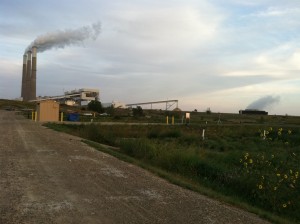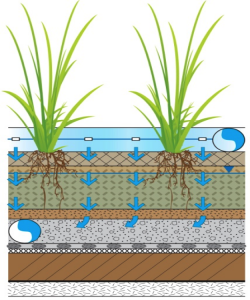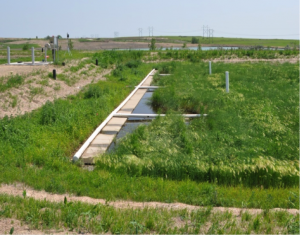Friends of the Kaw applauds Westar’s successful use of wetlands at Jeffrey Energy Center to treat scrubber waste water. The following is from Westar.
Jeffrey Energy Center Water Treatment Wetlands
In order to increase sulfate removal from air emissions to above 95%, Jeffrey Energy Center(JEC) added limestone slurry scrubbers to all three units in 2009 and 2010. Now captured in a water medium, metals and salts needed to be removed and, ideally, the water returned to the plant for reuse. Westar canvassed power plants with scrubbers and found none with treatment techniques that would accomplish our goals given our effluent characteristics.
Several options were considered, with none being as cost-effective or environmentally favorable as Westar personnel were seeking. Understanding the substantial natural water purification that wetlands perform, we asked if we could design treatment wetlands that could target the constituents, mainly metals and salts, that were most challenging to remove. We consulted with Burns and McDonnell to consider this and concluded that it was worth pursuing. After drafting a conceptual plan for scaled-down trial wetland cells, Westar discussed this idea with Friends of the Kaw, Sierra Club and the KDHE, with all viewing it favorably. If the small scale experiment was successful, it was anticipated that a larger system would be developed later to treat all of JEC’s scrubber effluent.
The 8 cells were constructed in summer 2010, wetland vegetation plugs were transplanted in November, and we expected to start seeing treatment benefits in spring 2011. We were pleasantly surprised to see removal of metals right away, most notably in those cells designed to move flows vertically through the plant root zones and soil layers. This continued with warming weather and the plants exploded to fill the wetland surface area by summer 2011. Removal rates between the differently-designed cells and with other treatments were compared. Kansas State faculty and students did both field and lab work to help us understand the capture mechanisms and magnitudes. Metals removal rates were very high but, despite using a variety of salt-loving grasses, collection rates of chlorides and sulfates were not as high as we’d hoped by late 2011. Westar and Burns and McDonnell evaluated our final treatment options and concluded that full-scale wetlands combined with some supplemental chemical removal of salts presented the most economical and environmentally benign approach and the KDHE approved this plan in summer 2012.
Since then, Burns and McDonnell have been preparing the final treatment wetland package, emphasizing and expanding those components which proved most effective, and construction will occur in 2013 and it with full operation by summer 2014. Many personnel from power plants across the U.S. have visited this experiment and we are pleased to share information so that others can benefit. To think – it started with a small understanding and appreciation of the myriad benefits of natural wetlands.
Vertical Flow Bed Cells
Completed VSB on left and VFB on right. VSB entrance includes concrete apron with gated irrigation delivery pipe; VFB entrance includes concrete apron and gated lateral irrigation pipes.




 Paddle safely! Use the links below to quickly access information that impacts river conditions.
Paddle safely! Use the links below to quickly access information that impacts river conditions.
